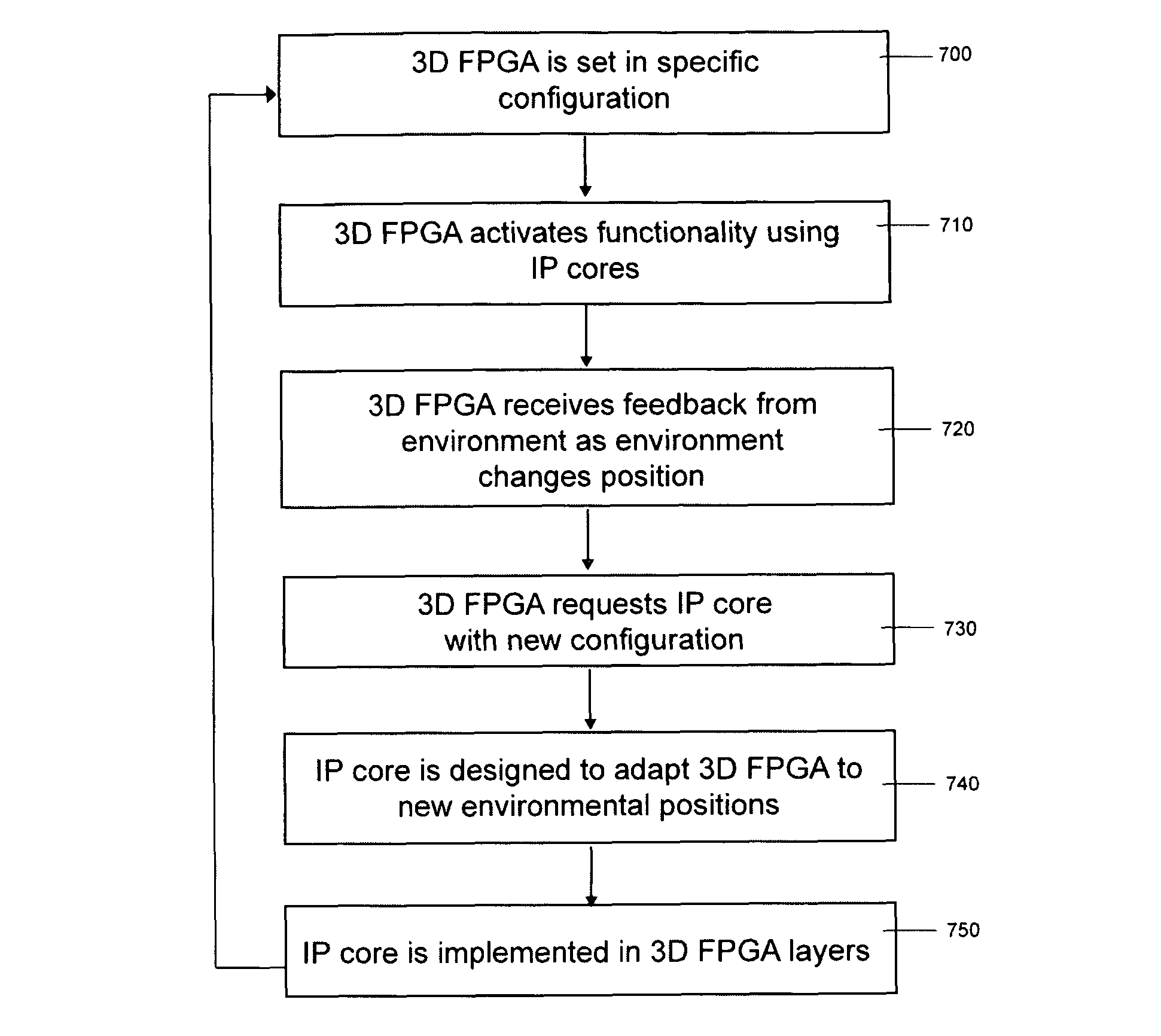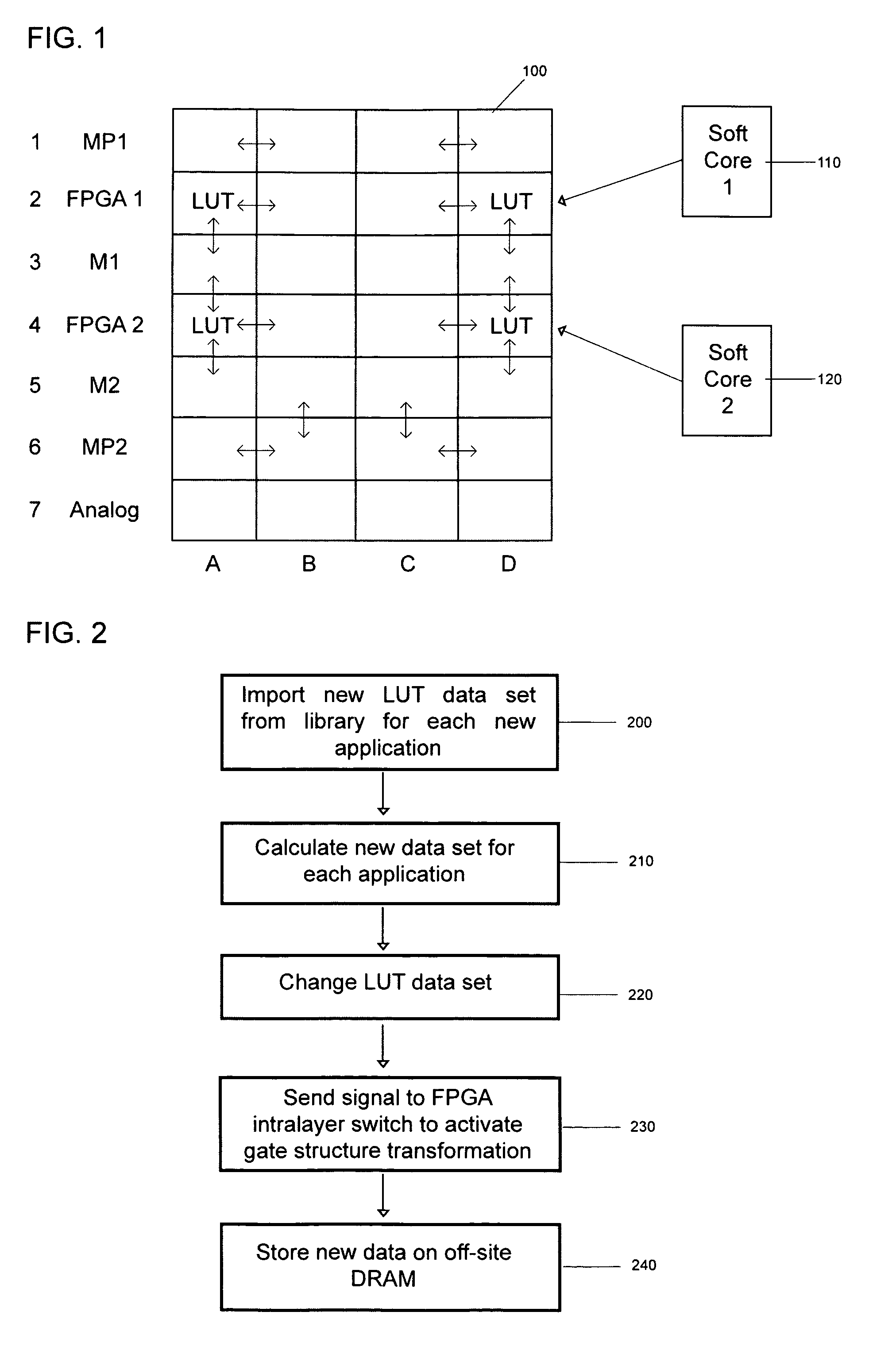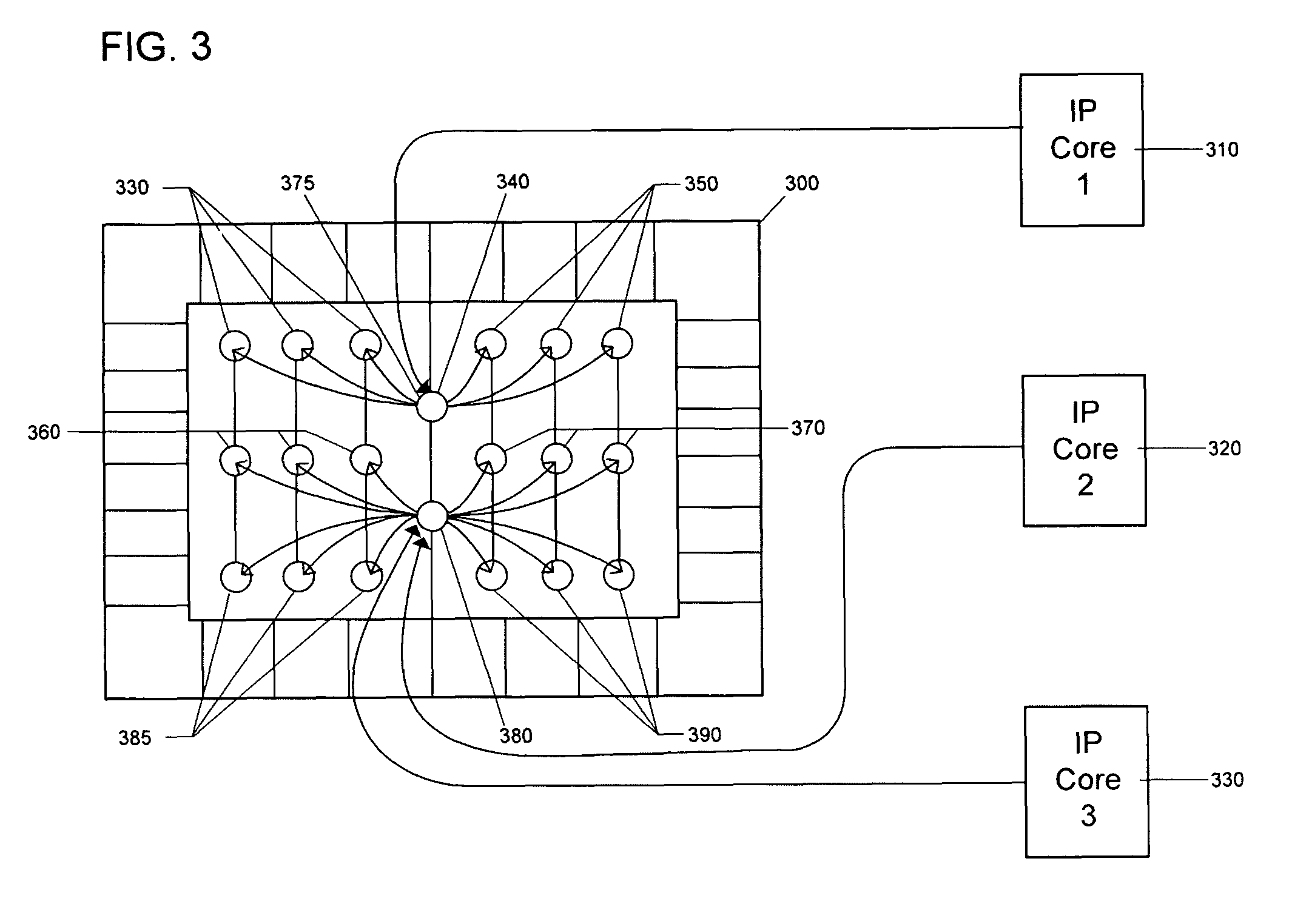IP cores in reconfigurable three dimensional integrated circuits
a three-dimensional integrated circuit and core technology, applied in the field of ip cores, can solve the problems of limiting the responsiveness of specific types of applications, all four have limits, and the approach is limited to optimizing arithmetic-intensive applications, so as to increase flexibility for customers, save substantial time and resources in designing, and reduce the time to market of specific applications
- Summary
- Abstract
- Description
- Claims
- Application Information
AI Technical Summary
Benefits of technology
Problems solved by technology
Method used
Image
Examples
Embodiment Construction
[0114]FIG. 1 shows the side view of a multilayer hybrid IC. Layers 1 and 6 consist of microprocessors, layers 2 and 4 consist of FPGAs, layers 3 and 5 consist of memory components and layer 7 consists of analog components. LUTs are in the outside edges of the FPGA layers. The arrows indicate the interactions between tiles in the IC. Soft core 1 (110) interacts with a LUT on FPGA 1, while soft core 2 (120) interacts with a LUT on FPGA 2. The soft cores update the program code on the FPGAs.
[0115]FIG. 2 is a flow chart of a process for the organization of netlists to store new data in a LUT. Once LUT data sets are imported from a library for each new application (200), a new data set are calculated for each application (210). The LUT data set is then changed (220) and a signal is sent to the FPGA intra-layer switch to activate the gate structure transformation (230) to reorganize the FPGA gate arrays. New data is then stored on off-site DRAM (240) components.
[0116]FIG. 3 shows the load...
PUM
 Login to View More
Login to View More Abstract
Description
Claims
Application Information
 Login to View More
Login to View More - R&D
- Intellectual Property
- Life Sciences
- Materials
- Tech Scout
- Unparalleled Data Quality
- Higher Quality Content
- 60% Fewer Hallucinations
Browse by: Latest US Patents, China's latest patents, Technical Efficacy Thesaurus, Application Domain, Technology Topic, Popular Technical Reports.
© 2025 PatSnap. All rights reserved.Legal|Privacy policy|Modern Slavery Act Transparency Statement|Sitemap|About US| Contact US: help@patsnap.com



